Change language: Dutch (Nederlands) ![]()
The Grenzlandring (Borderland circuit) in Germany, situated close to the Dutch border, was from 1948 to 1952 the fastest circuit in Europe. This 5,6 miles long oval street circuit was originally built for a military purpose…
The origin of the Grenzlanring
At the beginning of World War Two, a transport route was needed to the western front. Because heavy military equipment should be transported a surface of concrete was chosen for the new road. After the war the road was used as the ring road around Wegberg.
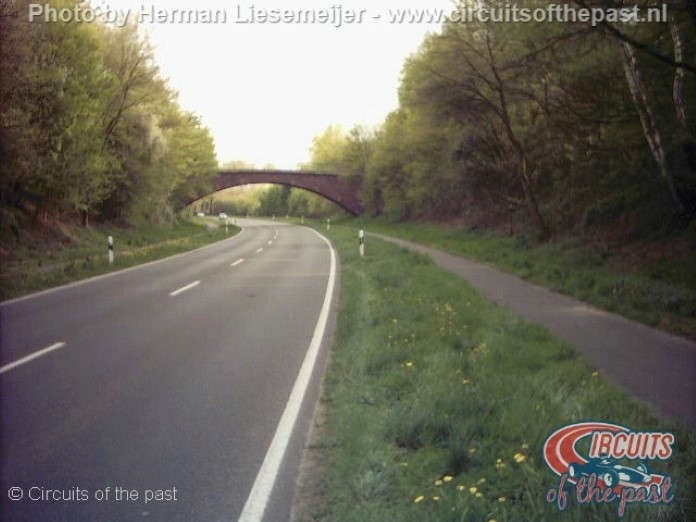
At a night the major of Rheydt, a town close to Wegberg, was lost on this road. When he passed a cyclist for the thirth time he realised that he was driving in circles. He asked the racing driver Emil Vorster, who was living in Rheydt, to investigate this road on its possibilities for motor racing. And so it happened that on the 19th of September 1948 the first races have been held here.
The layout of the Grenzlandring
The oval shaped circuit contained two very long straights and two very long left hand corners and was driven anticlockwise. It was an extremely fast and dangerous track which was compared with the legendary Tripoli circuit. In and around Wegberg, the Grenzlandring was often affectionately called “The AVUS West”.
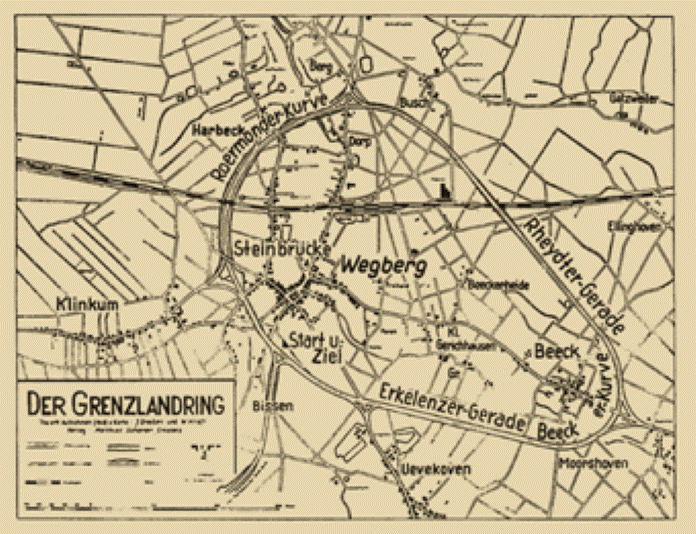
The Grenzlandring with the typical oval shape. Click on the map for a photo tour around the street circuit.
During the motorcycle races on September 11 in 1949, George Meier drove with his BMW an average speed of 209 km/h (130 Mph). And in his fastest lap 216 km/h (134 mph). By the cars, Tony Ulmen reached at September the 9th in 1951 an average speed from 211,9 km/h (131,67 Mph).
Safety was little thought in those days. There were no crash barriers or run-off areas, there was absolutely no margin for mistakes! The only safety measure to protect the public was a deposition of straw bales. In order to stop a crashing vehicle they connected those straw bales with wires of steel. This would prove to be a terrible mistake…
In this video you see a lap at the Grenzlandring as it is today.
The 1952 accident and the end of the Grenzlandring
It’s Sunday, August 31st, 1952. That day there were races at the Grenzlandring, and the spectators arrived in big numbers. Then in the afternoon disaster strikes. German racing driver Helmut Niedermayr lost control during a Formula 2 race at the end of Roermond Corner and crashes on the inside of the bend into the crowd. Thirteen people were killed and 42 were wounded, including Helmut Niedermayr.
Among the dead were six children. Due to their small size, they were exactly with their neck at the level of the steel wires. A rescue worker who arrived at the scene stated that one of the children was even beheaded.
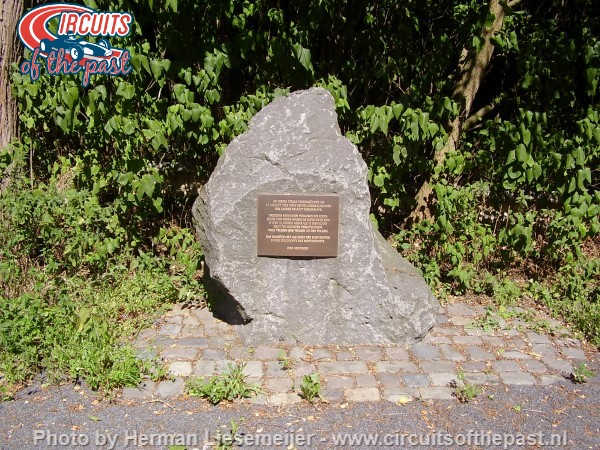
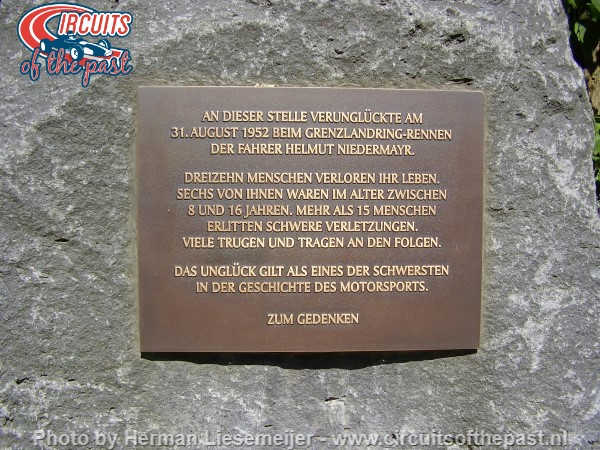
This terrible accident marked the end of racing at the Grenzlandring. The minister of internal affairs banned racing on the fast and dangerous street circuit. In 2012, exactly 60 years later, a monument was unveiled at the site of the crash in remembrance to the victims.
Grenzlandring today
Today the old Grenzlandring is still used as the ring road around the city of Wegberg. On three points they modified the layout a little to connect new intersections. If you want you can still drive a lap at the former street circuit.
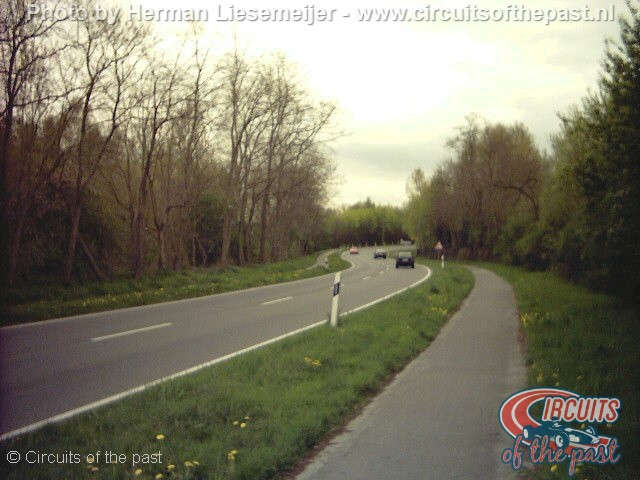
At this point the road has been modified. The right turn was added later to connect a new intersection.
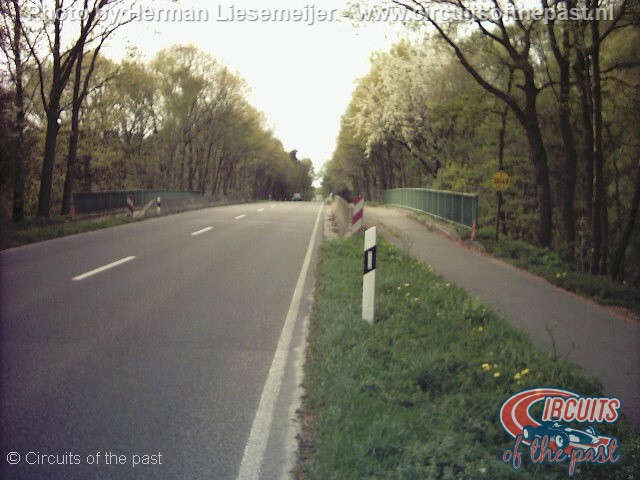
© Text: Herman Liesemeijer Pictures: Herman Liesemeijer Map: Mattijs Diepraam 8w.forix
Subscribe to our YouTube Channel: youtube.com/circuitsofthepast


